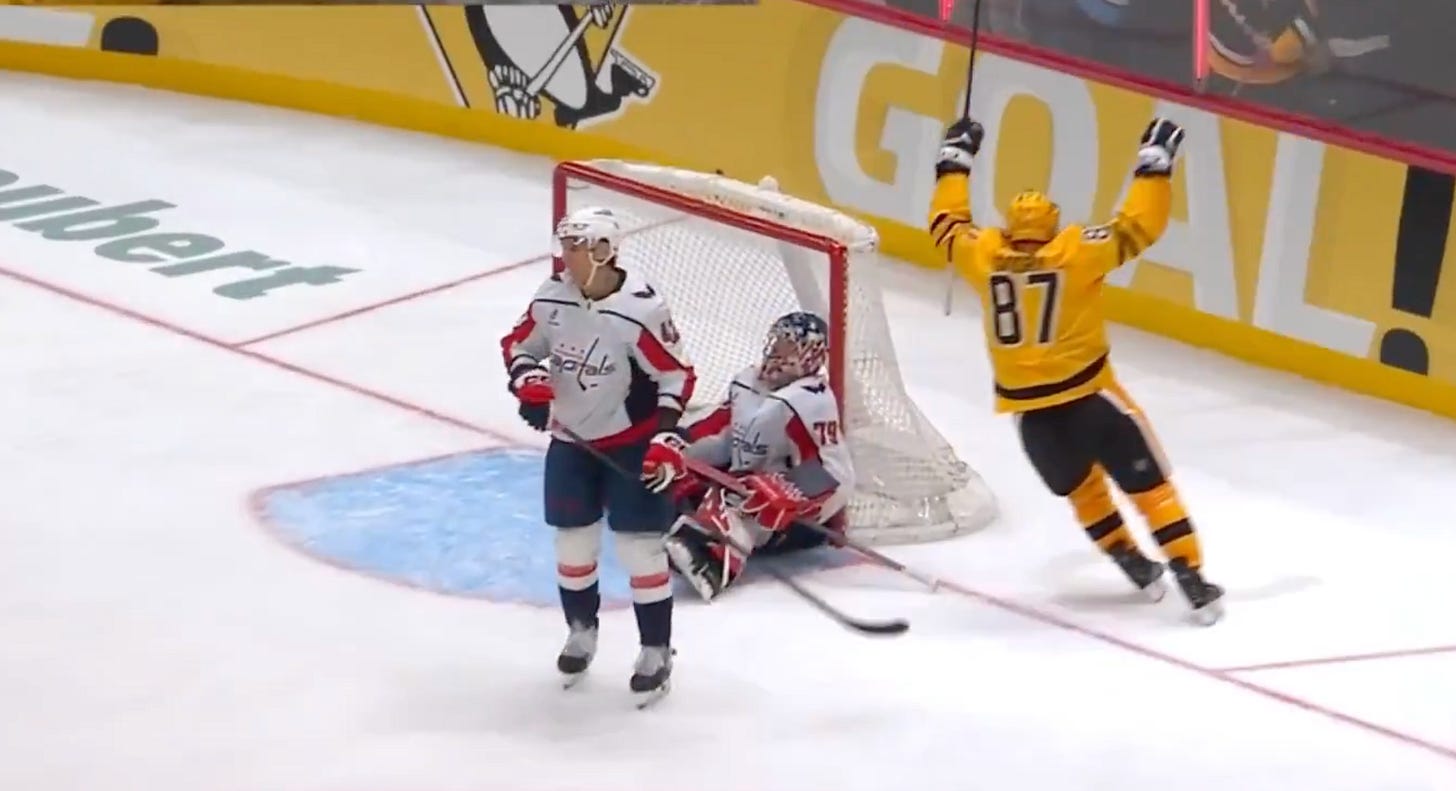Vibe Check: Where's Last Year's Magic, And What's Going Wrong For The Capitals?
The Capitals have dropped five of the last six, but what's the main issue?
Things aren’t looking great for the Washington Capitals.
There have been flashes of the magic that carried them last season, including Tom Wilson’s hot streak, Alex Ovechkin’s 900th career goal and other storylines, but at the end of the day, the Capitals just aren’t finding ways to get two points and have dropped five of the last six.
“Just the way it’s going for us right now,” Dylan Strome said following a 5-3 loss on Thursday to the Pittsburgh Penguins that saw a Caps’ comeback thwarted by special teams.
Despite how things look to start things off, Strome remains steadfast in Washington’s ability to get the job done.
“We’re going to be a great team like we were last year,” he affirmed.
Let’s break down what’s going on for the Capitals.
At 5-on-5, Washington’s doing a lot right, with the exception of a Sunday matinee loss to the Vancouver Canucks and the collective group performance on the second half of back to backs, which haven’t been kind to Charlie Lindgren, who’s had struggles of his own so far.
Still, the Capitals have shown they can score at even strength — maybe not with the same gusto as last year, but still, enough to spark a rally.
That was on display again on Thursday with a miraculous second-period comeback against the Penguins, as Strome, Rasmus Sandin and Tom Wilson all scored in the second half of the middle frame to completely erase a 3-0 deficit entering the third.
Ultimately, Wilson wasn’t convinced that D.C. really ever had a fighting chance to win, and a lot of that comes from the fatigue the team has shown on back-to-backs so far this season. Washington has had a league-leading four back-to-back series to open the season and has 14 total on the slate this year.
“I think that’s the other thing, we got behind the 8-ball early, showed some character to get back in it and kind of continued to shoot ourselves in the foot,” Wilson said. “Obviously when you’re on a back-to-back, the brain’s just got to be a little bit more sharp. You got to play simple, you got to be short with your shifts, manage the game. They controlled the bigger moments tonight and over the course of 60, we just didn’t give ourselves a chance.”
It’s special teams that remains the biggest issue, at both ends of the spectrum.
On the power play, Washington is just 1-for-21 over the last six games, and 7-for-46 overall on the season. On Thursday, it was 0-for-3, and even with two opportunities to take the lead in the third, D.C. came up empty — and then gave up a power play and subsequent goal on the last chance.
“Our special teams isn’t good,” Strome said. “We need to find a way to be better, there’s no way around it. Like (coach Spencer Carbery) said the other day, it’s cost us games. It felt like another one tonight.”
Then, there’s the penalty kill. Over the last decade, the Capitals’ PK has been held to a high standard as one of the top units in the league, led by the likes of long-time center Nic Dowd. But so far this season, it’s been a different story.
Washington’s 76.9 percent success rate on the PK, which has given up nine goals on 39 opportunities, ranks 12th-worst in the league, and was the difference between two points on Thursday, as D.C. surrendered three power-play goals — including a late go-ahead tally for Bryan Rust — in the loss to the Penguins.
“It’s the same story… we got to get to work on it. There’s structure stuff, lack of ability to generate clears in certain situations,” Carbery said, adding, “We’re spending way too much time in zone as a penalty kill unit and eventually, good players are going to make plays.”
At the end of the day, quite a bit needs improvement, and the Capitals are still finding their identity early on. Still, the group has faith in one another, and believes there’s enough there to build on right now.
“We will be better,” Strome promised.



